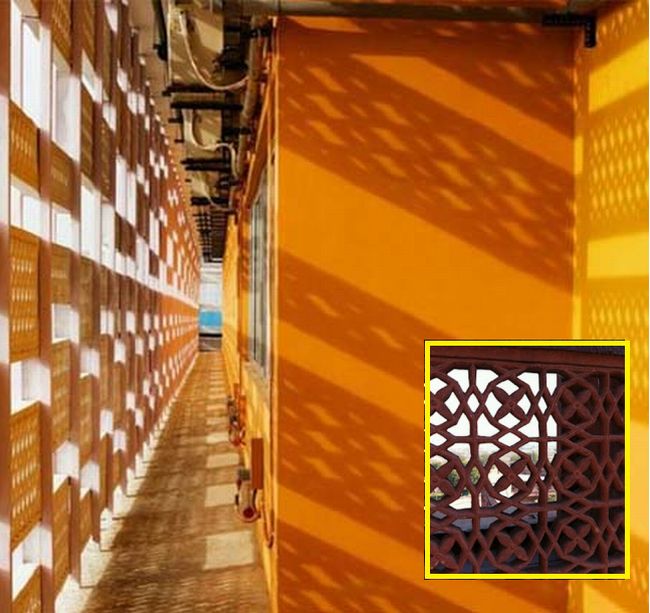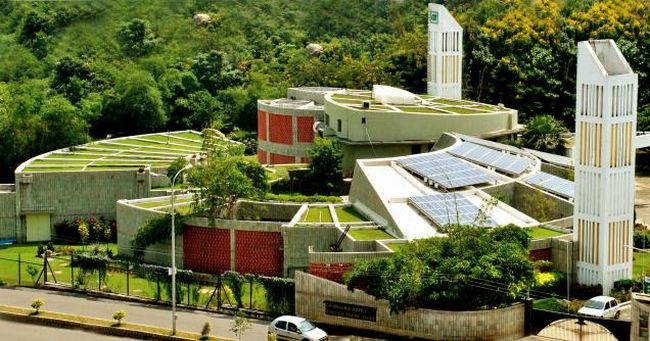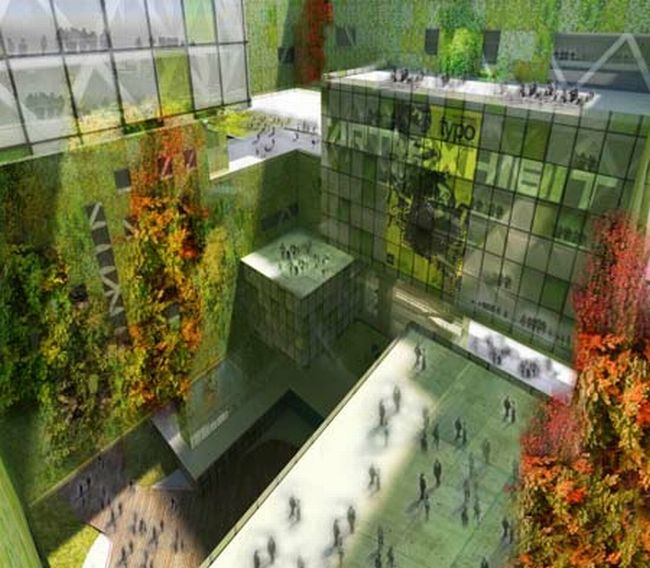
Many different technologies and designs which are being used in modern times have been inspired from ancient India. What may appear as complicated or fanciful designs of ancient times have most often been built that way for specific and scientific purposes after careful study by those ancient masterminds. Here, are some such ancient designs which have inspired modern technology and architectural designs.
Ancient stepwell architecture inspires cooling modern building

The ancient way of cooling the building in India was by digging a pond into the ground and surrounding the ground with walls to evaporate the water. This method was developed more than 1,500 years ago. This method was used mainly to escape the harsh desert heat in Rajasthan area by a series of water bodies with descending steps right into the bowel of the earth. The natural evaporation of the water into the spaces kept the entire building cool even without the use of power consumption. These were popularly knows as baolis
Such a simple but clever technology is now being studied and used by modern architects to cool buildings. One such classic example is the Pearl Academy of Fashion in Jaipur which is cooler by 20º inside the structure. There is a vast pool of water at the base of the modern building which reduces the heat within and keeps interior very cool. The architect Manit Rastogi drew inspiration from the ancient stepwell or Baoli design. The whole building has been raised on pillars above the ground and the walls made of heat absorbing material which creates a thermal bank. The building is cooled by recycled water from sewage treatment plant which evaporates in the spaces within.
Perforated double-skinned exterior i.e ‘Jaali’ for passive cooling

Many ancient Indian buildings particularly in Rajasthan were given the Jaali design not so much for decoration but for cooling the interior of the buildings. This is a very passive form of cooling device and worked efficiently in ancient times. The major palaces in Rajasthan have all been built with the Jaali design system which accounts for a cooler temperature within.
Modern architects are now drawing upon this device in building to allow for natural cooling within the interior of a building. The Jaali design is created by keeping a four feet space between the outer and inner walls for natural air circulation and cooling effect. The Jaali allows natural daylight to be diffused through for illumination and amply shades the interior spaces from overheating. The Jaali or latticed screens gave a decorative effect while filtering light into the palaces while being an efficient outer cooling skin for the entire building.
Green architecture integrating modern technology with traditional methods

Much of the ancient Hindu spiritual thoughts have always integrated the cosmos with the human beings. As such, there is much respect for the natural environment even in the ancient Indian architecture, such as elements like wind towers, roof terraces, clusters, courtyards and Jaalis which have all been used since ancient times as effective climate control methods.
CII-Godrej GBC in Hyderabad which received the LEED rating in 2004 is the modern adaptation of the above respect for the environment. The architect firm Karan Grover and Associates used the traditional architectural knowledge by cleverly using modern notions of sustainability.
Designed around a courtyard which is the traditional gathering area, the 20,000 square feet building is known to result in 88 percent energy savings. There are sensors in the building which detect illumination and deploy efficient electric lighting. There are also dimmers which naturally turn off unnecessary lighting within the building. In certain parts of the building, Jaalis have been used to prevent direct heat glare as also for ventilation and aural connection with the outer environment. The building has wind towers for air cooling and a collection of rainwater in ponds to reduce high consumption of supply water. The water is treated in two plants for use within the building.
Spiretec’s 20 storey vertical garden inspired from ancient green courtyards

In ancient buildings, the main hub would be the courtyard around which the other buildings were clustered around. This was mainly for air circulation and planting green garden within an otherwise drab stone enclosure.
STL, a Chicago based architectural firm has designed a new IT campus in Noida region outside New Delhi, based on the ancient architectural methods. This building has the potential of becoming a green lung with its 20-storey vertical garden with different species of drought resistant plants. The outer walls look absolutely stunning as they have been incorporated with plants and flowers. This IT campus, when completed will create a central place for commercial and cultural activities with all the tourist amenities and facilities. The unique exterior skin or wall will regulate the amount of air and sunlight which can flow throughout the interior of the building. The double-layer outer wall reflects the ancient Indian culture in geometric patterns and creating for a very efficient ventilation system.
Borgeaud Swiss watch, Septagraph inspired from ancient Indian calendar Panchang

The Swiss watchmaker Borgeaud has come up with a patented and unique wristwatch called the Septagraph. This watch has been inspired by the ancient Indian calendar Panchang which helps to synchronize the best days and times ahead, based on the ancient Vedic astrological calculation. The ancient astronomers used eight natural 90-minute divisions of the 12 daytime hours between sunrise and sunset.
The Borgeaud Company has used the ancient astronomical observation with its century old perfected Swiss horological traditions. Based on the Rahu periods which depend on the moon phase, the Borgeaud watch enables its owner to observe the daily 90-minute Rahu periods. The Septagraph watch is cased in 46 mm of sculpted rose or white gold and is water-resistant. There is a small arrow-shaped cut out which is filled with color and gradually empties out during the eight phase of the Rahu period.



